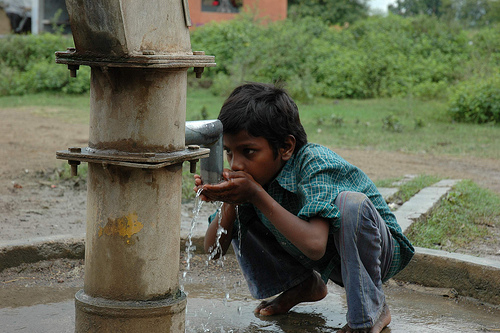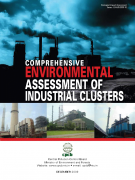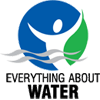Contamination, Pollution and Quality
Emerging groundwater crisis in urban areas – A case study of Bangalore city
Posted on 16 Aug, 2010 07:14 AMThe paper by the Institute for Social and Economic Change documents the case of Ward No. 39 situated at the outskirts of the Bangalore city to understand the emerging groundwater crisis due to overdraft in urban areas. Bangalore has no perennial river, which resulted in the growth of many lakes, acting as a source of groundwater recharge earlier.
Modeling of a coastal aquifer in Goa using FEFLOW – A research report by National Institute of Hydrology
Posted on 14 Aug, 2010 11:49 AMThe study by National Institute of Hydrology attempts to model seawater intrusion using FEFLOW, an interactive finite element simulation system in the coastal area of Bardez taluka in North Goa and evaluate the impact of increasing groundwater development on the phenomenon. Coastal tracts of Goa are rapidly being transformed into settlement areas and the poor water supply facilities have encouraged people to develop their own sources of water by digging or boring wells.
UN General Assembly s resolution on water and sanitation as a human right
Posted on 13 Aug, 2010 05:00 PMThe recent UN General Assembly Resolution on declaring water and sanitation as human right is or can be a powerful impetus to securing universal access to water and sanitation for people everywhere. This is the most recent in a string of initiatives to advance the provision of these essential services. Beginning with the UN Decade of Water in the eighties, then the declaration of the Millennium Development Goals, and later the adoption of General Statement 15 by the Economic and Social Council of the United Nations in 2002 the recognition of the fundamental importance of water (and more recently sanitation) to life, health and well being has been accepted at the international level. In India, while there is no specific mention of the right to water in the Constitution, the Supreme Court in its judgement(s)has upheld this as part of the right to life. Some organizations are working to make this a fundamental right, to remove any ambiguity.

Boy drinking water from handpump in Guna, Madhya Pradesh - Handpumps and wells are still one of the major source of drinking water in India.
Photo credits: Anil Gulati
Research reports of the National Institute of Hydrology (1996-2001) - Highlights
Posted on 12 Aug, 2010 10:29 PM
The India Water Portal is pleased to announce to its users, that a comprehensive archive of over two hundred and fifty technical research reports of the National Institute of Hydrology (NIH), Roorkee, have now been made available on the portal, and in the public domain for the first time.
48% industrial clusters in India are critically polluted: CPCB
Posted on 10 Aug, 2010 11:38 PM A Comprehensive Environmental Pollution Index (CEPI) is a very useful tool to capture the health dimensions of the environment including air, water and land. The CEPI is intended to act as an early warning tool and can help in categorising the industrial clusters/areas in terms of priority of planning needs for interventions.
A Comprehensive Environmental Pollution Index (CEPI) is a very useful tool to capture the health dimensions of the environment including air, water and land. The CEPI is intended to act as an early warning tool and can help in categorising the industrial clusters/areas in terms of priority of planning needs for interventions.
This report by the Central Pollution and Control Board (CPCB) presents the results of the application of the CEPI to selected industrial clusters or areas.
The main objective of the study was to identify polluted industrial clusters or areas in order to take concerted action and to centrally monitor them at the national level. This was in order to improve the current status of environmental components such as air and water quality data, ecological damage, and visual environmental conditions.
Fluoride free drinking water supply in North Gujarat: The rise of Reverse Osmosis plants as a cottage industry - A study by CAREWATER
Posted on 10 Aug, 2010 10:04 PMThe study by Carewater INREM Foundation explores the rise of Reverse Osmosis (RO) plants since 1970s as a cottage industry for providing fluoride free water supply in North Gujarat.
Ingress of saline water in coastal aquifers of Junagadh – A report by CAREWATER
Posted on 08 Aug, 2010 12:02 AM Salinity in coastal groundwater is a widespread problem and may be caused by individual or combined effects of inherent salinity, tidal effect, irrigation by saltwater and by seawater intrusion due to extensive pumping.
Salinity in coastal groundwater is a widespread problem and may be caused by individual or combined effects of inherent salinity, tidal effect, irrigation by saltwater and by seawater intrusion due to extensive pumping.
Groundwater contamination and rural water treatment in Gujarat - a discussion paper by Carewater INREM foundation
Posted on 07 Aug, 2010 06:09 PM The state is characterized by varied hydrogeology and vast areas are faced with typical groundwater quality problems like fluoride.
The state is characterized by varied hydrogeology and vast areas are faced with typical groundwater quality problems like fluoride.
Fluorosis in Gujarat: A disaster ahead – A report by CAREWATER
Posted on 07 Aug, 2010 08:53 AMInvitation for case study submission in water magazine
Posted on 06 Aug, 2010 11:26 AM
Our publication is coming up with the annual "Case Study Special Issue” in Sept. 2010. Its a collector’s issue, where we are covering leading industries across the globe.





